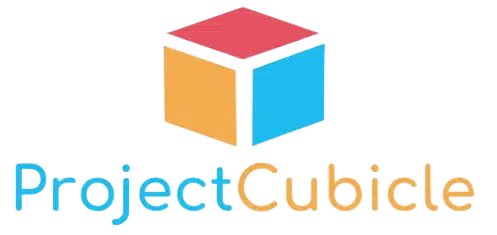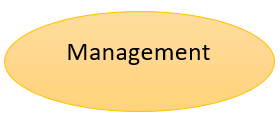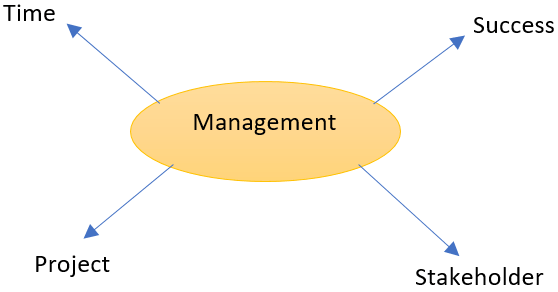Fun isn’t it? Creating ideas, just by using the power of our minds. We, humans, are strong beings. Let us discover the variations of Brainstorming Techniques!
Table of Contents
What is brainstorming? What is the definition of brainstorming? Is there a better way to brainstorm? What are some Brainstorming Ideas? What are the most common techniques of Brainstorming?
In this article, we’ll debate on current Brainstorming ideas and see how they can or do fit into our daily lives in depth.
First things first, Brainstorming is based on spontaneity. Like Freud’s free association method, which you are supposed to share the ideas that appear in your mind after a word or a concept is stated by the analyser, in Brainstorming imagine that each and every thought in your mind starts rotating. You wake them up by calling.
Baby steps. Say ‘cats’ for example. Cats. What is the first thing that pops in your mind when I say ‘cats’?
- Black
- Pharaoh
- Sacred
- Green eyes
- Milk
- Mouse
- Paw
The blank dots below are for you.
Cats:
- –
- –
- –
- –
- –
- –
Great. First step complete. Now, onto the next step.
Does this initiator have to be a single word or an object? Not necessarily. Let’s see what more we can do together using our brains.
Let’s take ‘management’
For Management I have:
- Project
- Time
- Stakeholder
- Success
What do you have for Management?
Management:
- –
- –
- –
- –
You can have more or less. It does not have to be 4 or 6 ideas. It can vary from 1 to how much you’d prefer. Having 5 ideas per person might work great if you are working with a team. Because each idea carries the importance of being a trigger to another. Do you know begin to see why we call it a ‘Storm’? A single idea begins rotating around itself and the wind causes another one to spin around, being affected by that single idea. Then, like domino blocks, every single idea from now on is the trigger of another. They start spinning around together, with groups, and eventually creating this massive storm: a Brainstorm.
The most unique of its kinds.
Oh and before we move on keep in mind that you can also break the triggering phase or word into parts. Divide and conquer as they say.
How Do We Brainstorm?
What are the rules of Brainstorming?
- Be spontaneous.
- No criticism allowed.
- Let your mind wander!
What happens then?
This depends on your intention. What do you neeeded these ideas for? Solving a problem? Creating an opportunity? Building a project? Warming up your team members? Or maybe just for the sake of its fun? Why not!
After a long and deep session of Brainstorming, we now get to judge the ideas! Are they good? Are they relevant to our topic(s) of interest?
There will be irrelevant ones as well, and that is completely alright. Just write all the ideas down and start crossing the ones you find irrelevant or not helpful. It’s important to excell in the right direction, else all your efforts will be for naught.
In conclusion, we evaluate each and every idea we or our team members come up with to leave the best ones to help us with our current task.
That’s what Brainstorming is.
Now that we’ve cleared that one out, let’s see in how many ways we can spin around, or.. Brainstorm!
7 Techniques of Brainstorming
1.Nominal Group Technique (NGT)
This technique is based on the perks of democrasy and tranquility. Why? Because everyone has to be involved and give their best during the Quiet Time! As the ideas are written down individually, they are read out loud and written down to a place where everyone can see, until all the ideas are shared with the group. Using charts, wallboards and such is highly suggested! Then a second silence is given to the members to independently rank the ideas written on the board. Later on, the members again read out their ranking orders and the idea(s) with the highest average rank is/are selected. Numerous studies suggest that Brainstorming using Nominal Group Technique produces better results cpmpared to traditional methods!
Overall, the diversity remains safe and unjudged too!
Let’s repeat!
Steps of Nominal Group Technique
Step 1: Quiet Time (10 mins)
Step 2: Read out Loud and Onto the Board (15-30 mins)
Step 3: Quiet Time (10 mins)
Step 4: Rank out Loud and Discuss (30-45 mins)
Step 5: May the Best Win
Formula of Nominal Group Technique?
Independence + Tranquility + Ranking = NGT
Pros and Cons?
Advantages of Nominal Group Technique (NGT)
- Avoids harsh criticism and conflict
- More efficient
- Supports an equal sharing environment
- Large amount of ideas are generated
Disadvantages of Nominal Group Technique (NGT)
- Lacks flexibility of dealing with ‘one problem at a time’
- More time needed to prepare before the discussion
- Less area for spontaneity
If all is well with NGT, let’s move on to the second technique: Group Passing!
2. Group Passing Technique
This technique actually explains itself. Ever thought about creating a scrapbook? This is the idea version. Each member has one piece of paper in front of them and they write down an idea. When the writing is done each member pass the paper to the person who is sitting next to them. When this rotation is complete, each member must have the paper of the person who is sitting at the other side of them. No one should be left empty handed! Once again, each member adds an idea below and passes the paper onto the next person. This process continues until each member has their own paper in front of them. Voila! – You have an idea scrapbook!
There isn’t really more to this technique and it’s quite simple for Brainstorming! With that let’s see what Team Idea Mapping Method is!
3. Team Idea Mapping Method
Ever heard of an Idea Map? There are various ways to create an idea map. Idea maps can be used either individually or in groups, here we’ll see how it works in groups! I believe a great way to visualise an idea map would be to think about a Seed. That seed is the Initiator, which we’ve discussed in the beginning of this article. Let us use the same example and plant Management as a seed.
Now that we have our Initiator, we can start. Each team member should brainstorm individually. Let’s say that our team consisted of 4 members and each of them contributed to a new branch. Our seed happens to blossom!
Now, each member is encouraged to contribute to our new branches. The goal in the end is to have a tree filled with tens of branches and fruits, ideas. Diversity is once more encouraged and there are no limits!
At the final stage, the best ideas are selected and priorities are determined. Later on, all that is left is taking action!
Let’s see what Directed Brainstorming is about!
4. Directed Brainstorming
This one may be considered a little mechanical. Each member is given a piece of paper, it can also be done virtually or electronically, and are told the brainstorming question or subject. They are asked to write down only 1 response and pause. The papers are randomly exchanged among the members. Then each member is asked to produce another idea based on the previous one. The main objctive is to create better ideas and the process is, similar to Group Passing Technique, repeated about 3 or more times.
That’s it!
And what about Guided Brainstorming?
5. Guided Brainstorming
What matters in Guided Brainstorming are the constraints of perspective and time. All potential causes for conflict are removed and a critical and creative thinking environment is stimulated. Similar to Team Idea Mapping Method, there is a pre-drawn map forehand. Team members are asked to consider adopting different mindsets to have a wider point of view in approaching the subject, which collectively results in better performance.
The key point here is that after this session, each team member knows what to research, due dates, priorities and assignments for the next meeting with a clear understanding of the current goals.
What about Individual Brainstorming?
6. Individual Brainstorming
Easy as it sounds. Individual, alone version of Team Mapping Method. It’s a useful technique to visualise and have a diagram of our thoughts in order to focus on or find a solution for a problem. This method is also commonly prefered in Creative Writing and has proven itself superior to traditional group brainstorming. Moreover, Individual Brainstorming includes Free Writing, Free Speaking, Word Associating, Creating a Mind Map (which we’ve discussed earlier and similar to Team Mapping Method), and so on. In summary, anything that might feed your thoughts and activate the mind!
Lastly, we have Question Brainstorming!
7. Question Brainstorming
The only difference in Question Brainstorming compared to other methods we’ve discussed above that we don’t brainstorm for ideas, but questions instead! – Questorming! We don’t try to come up with short answers or immediate solutions, rather this technique equips us with a construction plan or a framework for our future action plans. Once our queztion list is ready to go, we can prioritize them according to our future action plans!
That’s all about Brainstorming!
In this article, we’ve discussed the definition of Brainstorming in depth, exemplified it, and explored 7 Techniques of Brainstorming.
Which one do you think is the most effective? Is there another or a better way to Brainstorm?
Share your thoughts with us below!
We will see you very soon with another topic very soon.


















